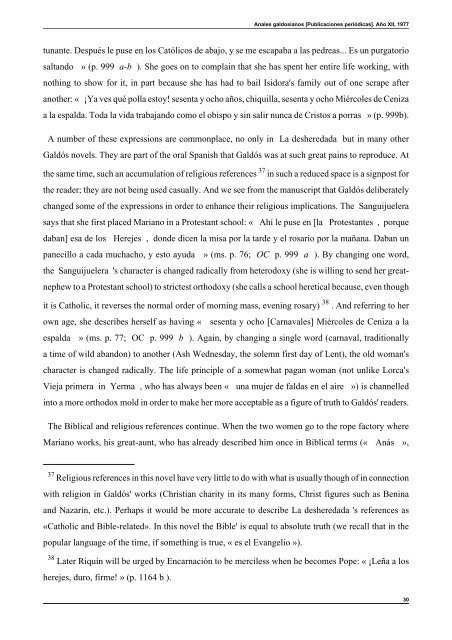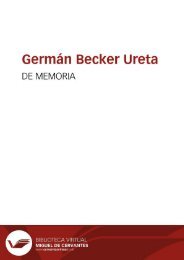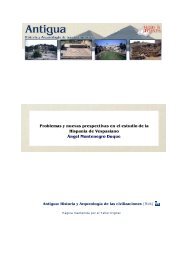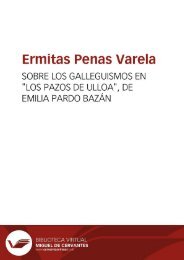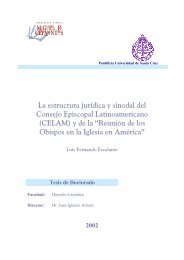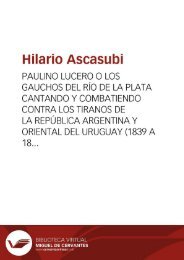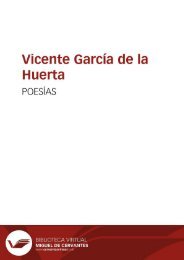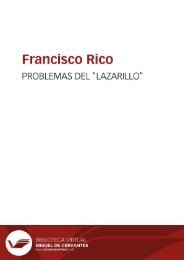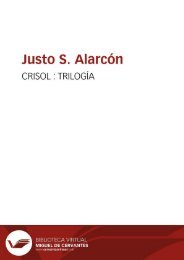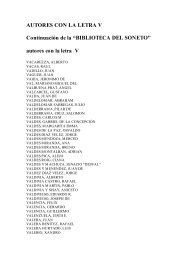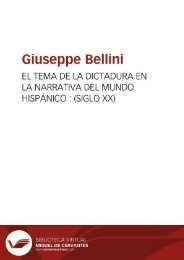You also want an ePaper? Increase the reach of your titles
YUMPU automatically turns print PDFs into web optimized ePapers that Google loves.
Anales galdosianos [Publicaciones periódicas]. Año XII, 1977<br />
tunante. Después le puse en los Católicos de abajo, y se me escapaba a las pedreas... Es un purgatorio<br />
saltando » (p. 999 a-b ). She goes on to complain that she has spent her entire life working, with<br />
nothing to show for it, in part because she has had to bail Isidora's family out of one scrape after<br />
another: « ¡Ya ves qué polla estoy! sesenta y ocho años, chiquilla, sesenta y ocho Miércoles de Ceniza<br />
a la espalda. Toda la vida trabajando como el obispo y sin salir nunca de Cristos a porras » (p. 999b).<br />
A number of these expressions are commonplace, no only in La desheredada but in many other<br />
<strong>Galdós</strong> novels. They are part of the oral Spanish that <strong>Galdós</strong> was at such great pains to reproduce. At<br />
the same time, such an accumulation of religious references 37 in such a reduced space is a signpost for<br />
the reader; they are not being used casually. And we see from the manuscript that <strong>Galdós</strong> deliberately<br />
changed some of the expressions in order to enhance their religious implications. The Sanguijuelera<br />
says that she first placed Mariano in a Protestant school: « Ahí le puse en [la Protestantes , porque<br />
daban] esa de los Herejes , donde dicen la misa por la tarde y el rosario por la mañana. Daban un<br />
panecillo a cada muchacho, y esto ayuda » (ms. p. 76; OC p. 999 a ). By changing one word,<br />
the Sanguijuelera 's character is changed radically from heterodoxy (she is willing to send her great-<br />
nephew to a Protestant school) to strictest orthodoxy (she calls a school heretical because, even though<br />
it is Catholic, it reverses the normal order of morning mass, evening rosary) 38 . And referring to her<br />
own age, she describes herself as having « sesenta y ocho [Carnavales] Miércoles de Ceniza a la<br />
espalda » (ms. p. 77; OC p. 999 b ). Again, by changing a single word (carnaval, traditionally<br />
a time of wild abandon) to another (Ash Wednesday, the solemn first day of Lent), the old woman's<br />
character is changed radically. The life principle of a somewhat pagan woman (not unlike Lorca's<br />
Vieja primera in Yerma , who has always been « una mujer de faldas en el aire ») is channelled<br />
into a more orthodox mold in order to make her more acceptable as a figure of truth to <strong>Galdós</strong>' readers.<br />
The Biblical and religious references continue. When the two women go to the rope factory where<br />
Mariano works, his great-aunt, who has already described him once in Biblical terms (« Anás »,<br />
37 Religious references in this novel have very little to do with what is usually though of in connection<br />
with religion in <strong>Galdós</strong>' works (Christian charity in its many forms, Christ figures such as Benina<br />
and Nazarín, etc.). Perhaps it would be more accurate to describe La desheredada 's references as<br />
«Catholic and Bible-related». In this novel the Bible' is equal to absolute truth (we recall that in the<br />
popular language of the time, if something is true, « es el Evangelio »).<br />
38 Later Riquín will be urged by Encarnación to be merciless when he becomes Pope: « ¡Leña a los<br />
herejes, duro, firme! » (p. 1164 b ).<br />
30


